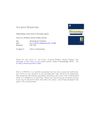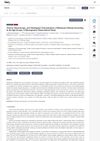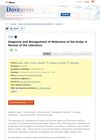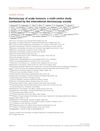Dermatologic Applications of Direct-to-Consumer Genomic Analysis
May 2014
in “
Journal of The American Academy of Dermatology
”
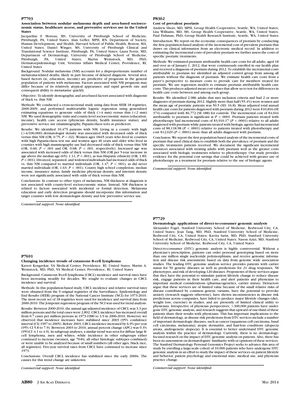
TLDR Living near more dermatologists and using certain cancer screening tests lowers the chance of being diagnosed with advanced skin cancer.
The document discusses a study that aimed to identify demographic and area-based factors associated with the diagnosis of thick versus thin nodular melanoma (NM), a type of skin cancer known for rapid growth and high mortality due to delayed diagnosis. The cross-sectional study analyzed data from 10,475 patients with NM using the SEER 18 registries from 2000-2009. The study found that living in a county with a high density of dermatologists was associated with a decreased likelihood of being diagnosed with thick NM. Women in areas with high usage of Papanicolaou tests and mammography also had decreased odds of thick NM. Increased age and Hispanic ethnicity were associated with increased odds of thick NM, as were individuals who were divorced, separated, widowed, or never married. Socioeconomic status, such as county high school completion, median income, and insurance status, were not significantly associated with NM thickness. The study concluded that NM thickness at diagnosis is more related to factors associated with incidental or formal detection rather than socioeconomic status, suggesting that melanoma education and early detection programs should target areas with low dermatologist density and low preventive service use.
